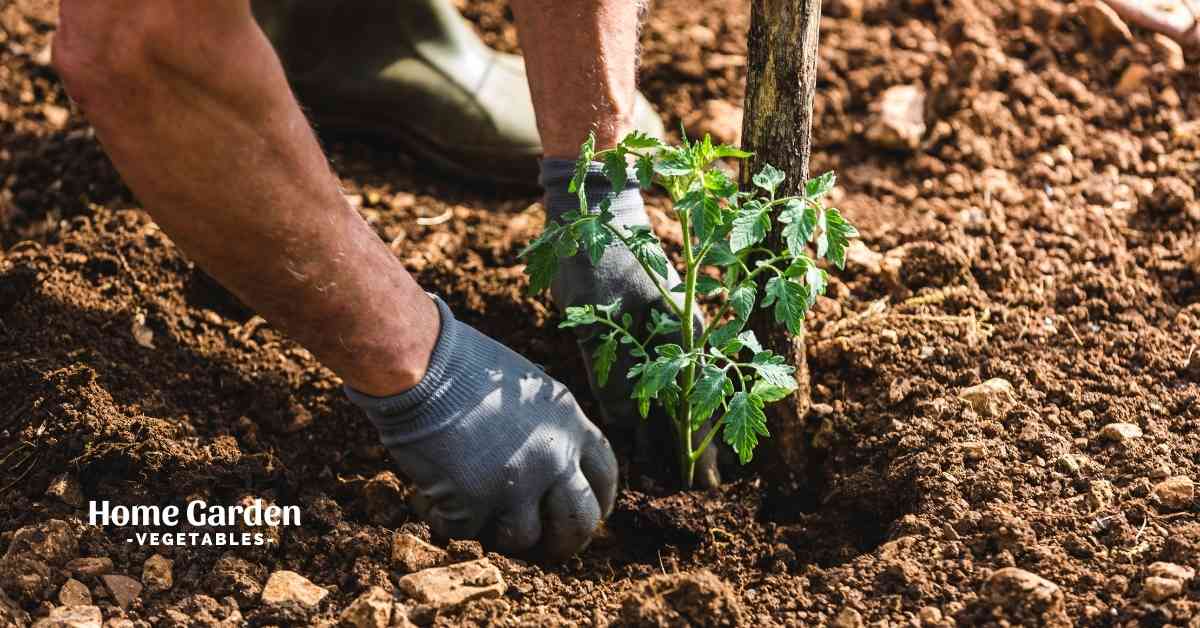Mulching is important for all vegetable crops, including tomato plants. It boosts growth and, consequently, improves productivity of the crop. The natural covering on top of the soil around tomato plants brings a host of benefits. It keeps the moisture in, balances the soil temperature, and blocks weeds. On top of that, as the organic matter breaks down over time, it enriches the soil with nutrients that won’t just benefit your existing tomato crop, but your future crops as well.
There are all kinds of different mulches available in gardening stores. What is the best mulch for tomato plants and how to use it to bring the most benefits to the crops. Continue reading this post and you’ll find out everything you need to know about mulching tomatoes.
Reader Poll: What online courses would interest you?

Why Should You Mulch Tomato Plants?
Though mulching isn’t a necessity, gardeners can tell with experience that you’ll achieve much bigger yields with larger sizes and superior quality of tomatoes if you mulch the crop. Tomato plants are very thirsty crops, which is the biggest purpose that mulches serve. They retain rainwater and irrigation water in the soil by keeping the ground cool and out of direct sunlight. Mulches offer a better chance to the soil to soak in water and since evaporation is reduced, water is consistently available to the roots for absorption between waterings.
Moreover, weeding is a hassle that most gardeners would rather avoid. Letting weeds grow alongside your tomato crops leeches moisture and nutrients away from the roots and exposes the crops to diseases and pests. A thick layer of organic mulch will prevent weed seeds from germinating. The few seedlings that do manage to appear can easily be pulled out by hand.
Mulches keep the tomato leaves and stems from coming in contact with the soil, preventing soil-borne diseases. Organic mulches decompose over time, forming a steady source of nutrients for your plants and improving the soil’s health and structure over time.
Subscribe to our newsletter!
Best Mulching Options For Tomato Plants
With the countless benefits mulches have to offer, the next thing you’ll be wondering is what to mulch your tomato plants with? While there are several types of mulches available, you should know which ones offer the most benefits to your tomato crops.
Here’s a list of the best mulching options for tomatoes:
Shredded leaves
All the time and efforts you put into raking your garden of dead leaves can finally pay off! Instead of throwing them away, you can use them to benefit your tomato crop. However, remember not to use the dry leaves in their original form. Shredding is an important step, in the absence of which mulching with leaves can bring more harm than good. A layer of leaves on the ground will prevent air and water from reaching the soil and nourishing the roots. You can use leaf shredder to break them into smaller pieces before spreading them out as a mulch.
Composted leaves are also a valuable option for your tomato crop. Whether you use shredded leaves or composted leaves, they protect the plants from weeds, increase moisture retention and enrich the soil with nutrients as they break down gradually with the action of soil microbes.
Straw
Straw is a popular choice for mulching tomato plants. According to research wheat straw increases tomato yield by as much as 43%. It is inexpensive, readily available and easy to work with. Spread a 3 to 6 inch layer of straw around the tomatoes as mulch to conserve moisture and prevent weeds.
Straw breaks down quicker than other mulches, improving the soil’s nutrient composition and overall structure. While rice straw and wheat straw are both excellent options for mulching tomatoes, avoid using hay as it’s full of weed seeds.
Grass clippings
If you mow your lawn often, don’t let the grass clippings go to waste. Use them to mulch your tomato crop. However, make sure you don’t use fresh grass clippings as mulch. Fresh grass clippings will form a thick covering over the soil, preventing air and water from reaching the roots. Let the grass mowings dry out in the sun completely before spreading them out around your tomato plants.
A 4-inch layer of grass clippings is good enough to do the job. Since it breaks down quickly, you’ll need to re-apply fresh mulch every month or so to sustain the moisture retention of the soil.
Peat Moss
Peat moss is also a good choice since it decomposes slowly, adding nutrients to the soil. They are easily available at most home and garden centers and make a good mulch for most vegetable crops. However, do remember to water the plants deeply before mulching the tomato plants with peat moss. Peat moss absorbs a lot of moisture from the soil so water the plants thoroughly to make up for the loss.
Newspaper and Cardboard
Shredded newspaper, cardboard, and other paper-based products make an excellent mulch for tomato plants. They’re good at blocking out the weeds while still allowing air and water to move through for the roots to access them. Furthermore, they’ll decompose easily, leaving a host of nutrients for the tomato plants to consume. Just tear newspaper or cardboard into thin strips or pass it through a shredding tool before spreading it around the plants.
Conclusion
While plastic mulches are also available and work well in retaining heat and increasing yield, organic mulches are considered the best by most gardeners. Besides retaining heat and blocking out the weeds, they also allow air and moisture to pass through. Furthermore, they break down to enrich the soil with nutrients over time for a bigger and tastier tomato harvest.

